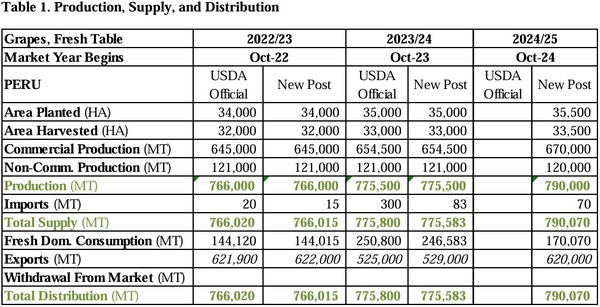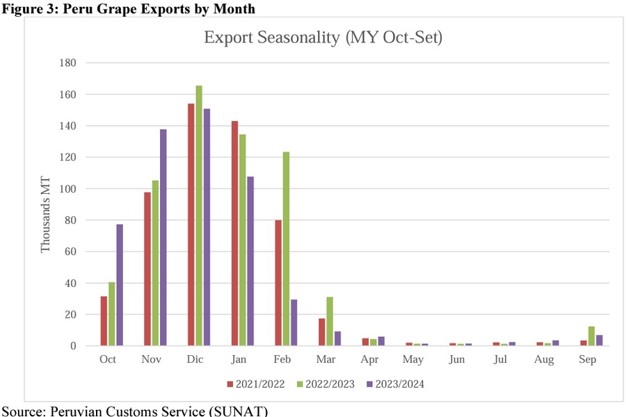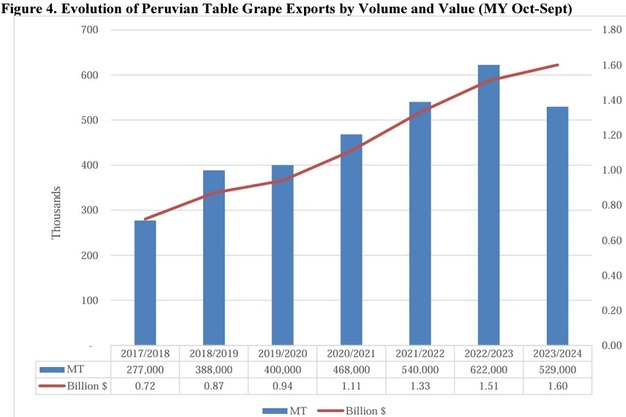Grape production in Peru is forecast to reach 790,000 metric tons (MT) in marketing year (MY) 2024/2025, an increase of two percent compared to the previous year. The expected increase is due to improved climatic conditions in northern coastal regions which represent 48 percent of the total production area. Domestic consumption of fresh grapes is forecast at 170,000 MT in MY 2024/2025, a decrease from last year due to higher international prices. Peruvian grape exports are forecast to reach a record of 620,000 MT in MY 2024/2025, a 17 percent increase from the previous year. The United States will continue to be the lead export market.

With better weather conditions, Peru's production is expected to reach 790,000 metric tons (MT) in the marketing year (MY) 2024/2025 (October-September), an increase of two percent over the previous year. The expected increase in production is due to better yields in northern Peru (Piura), which was severely hit by an extremely hot winter and heavy rains last season.
Peru's table grape production area stretches from North to South along the Pacific Ocean. Due to desertic conditions along the coast, daily temperatures consistently range between 9 and 30 degrees Celsius (48-86 degrees Fahrenheit), and have 12 hours of sunlight per day, year-round, which makes it an ideal region for grape production. These conditions, combined with investments in harvest technology and precision irrigation, enable Peru to produce mature vines 55 percent faster than in neighboring countries.

Peru first started producing table grapes in the late 1990s when the country bet on agriculture as one of its main strategic economic sectors. In the last 20 years, Peru has grown as an agricultural investment destination, equipped with multiple trade agreements, hydraulic infrastructure, and the ability to transform desert into highly productive agricultural land.

The 2023/2024 growing season was seriously affected by unusual weather conditions (heavy rains and high temperatures) that resulted in a lower harvest. Production in the North of the country (Piura, Lambayeque, and La Libertas) was severely affected. Reporting a 30 percent decrease in production compared to the amount harvested last year. Similar conditions affected the MY 2017/2018 harvest when negative weather conditions attributed to El Nino resulted in a poor harvest. This year's harvest, however, is expected to be much better than last year's due to improved weather conditions. Peruvian grape producers have adapted to changing weather conditions while ensuring the efficient use of water on their farms. Additionally, licensed grape varieties have increased productivity and increased competitiveness compared to common grape varieties.
To view the full report, click here.
USDA
Tel: +1 (202) 720-2791
Email: [email protected]
www.usda.gov
